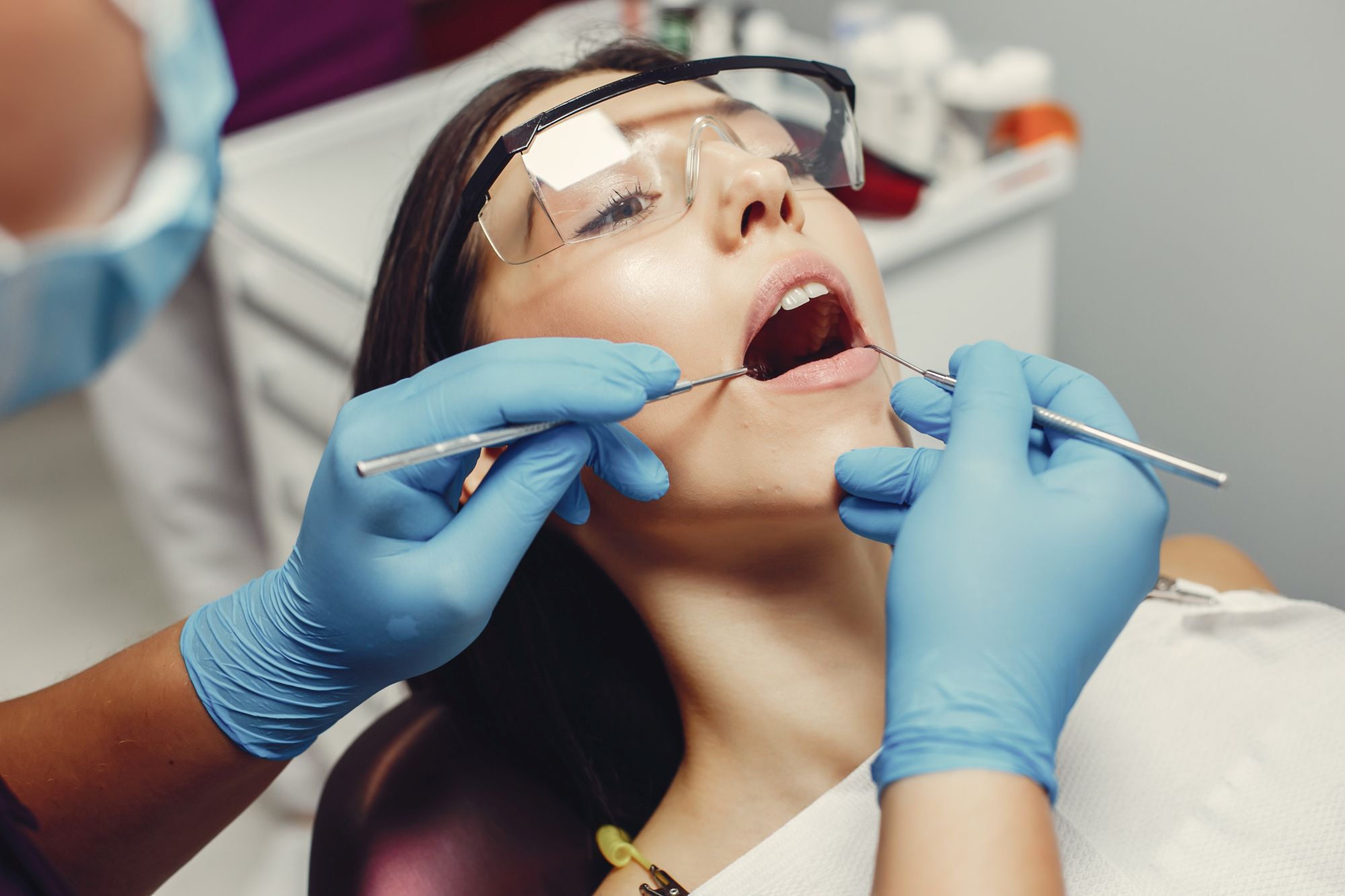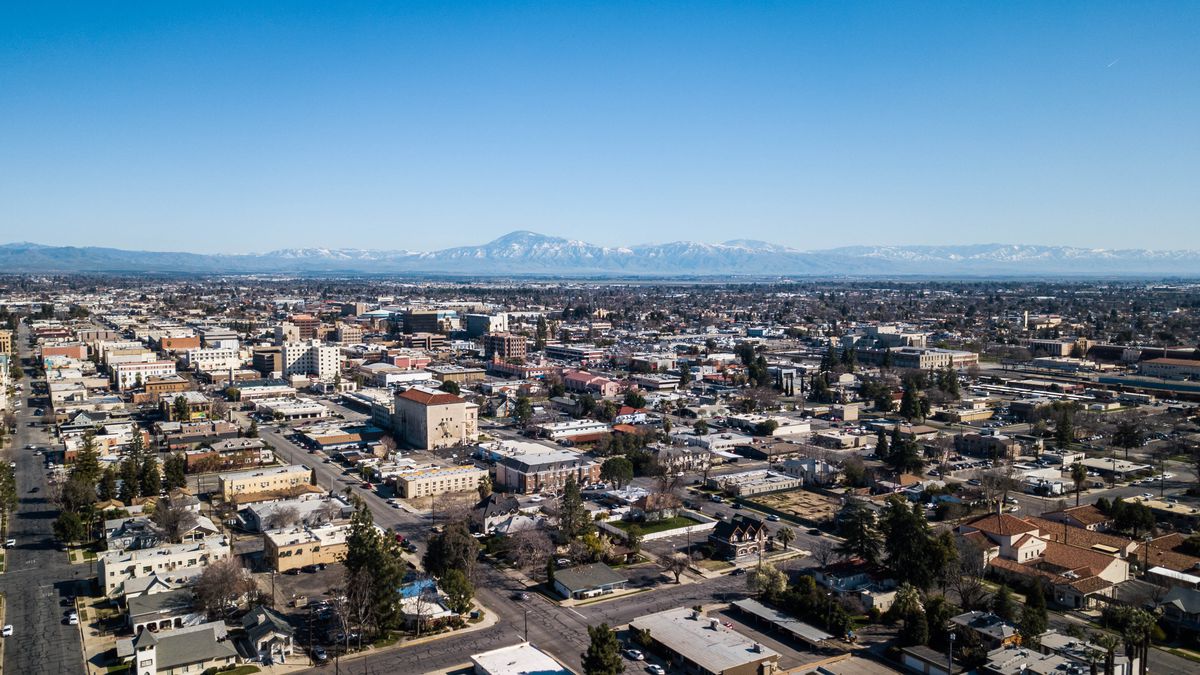Access to good dental care can sometimes be expensive and challenging to find. However, dental schools across the United States offer affordable and even free dental work to those in need. These institutions provide a valuable service to the community while giving their students a chance to hone their skills under expert supervision.
Dental schools constantly adjust their curriculum to accommodate growing patient needs and advances in dental technology. As a result, they are well equipped to deliver a wide range of treatments. Ranging from simple cleanings to more complex procedures, these colleges ensure that patients receive quality care at a fraction of the cost typically associated with private practices.
By turning to dental schools as an alternative for affordable dental care, patients contribute to the education of future dental professionals and simultaneously benefit from cost-effective treatment. This symbiotic relationship allows patients to maintain good oral health while supporting the institutions that will continue to shape the future of dental care in the United States.
Finding Free or Low-Cost Dental Care
Government Programs
One of the ways to access low-cost dental care is through government programs such as Medicaid and Medicare. These programs often cover essential dental services, especially for children and individuals with low incomes. Medicaid provides coverage for dental services in all states, but the extent of benefits may vary depending on the state. It is essential to check your Medicaid eligibility and the specific dental services covered in your location.
The Children’s Health Insurance Program (CHIP) also offers dental coverage for eligible children, which can help low-income families access affordable and preventive dental services. However, Medicare generally does not cover routine dental care services. In some cases, Medicare may provide coverage for dental procedures that are deemed medically necessary.
Nonprofit Organizations
There are numerous nonprofit organizations dedicated to providing free or low-cost dental care to those in need. The American Dental Association (ADA) and its local chapters often host events or offer programs to help underserved communities access affordable dental care. Additionally, community health centers are another resource for low-cost dental care, as they often provide dental services on a sliding fee scale based on the patient’s income.
Dental Schools
Dental schools can also be an excellent option for low-cost dental treatments, as they often provide quality care at reduced prices. By visiting a dental school clinic, patients can receive treatments from dental students who are supervised by experienced dental professionals. These treatments are typically more affordable than private dental practices, making them a viable option for those seeking cost-effective dental care.
To find a dental school near you, consult the American Dental Association’s list of accredited dental programs, and contact the school to inquire about the availability and pricing for dental services.
Dental Services Offered
Preventive Services
Most top dental schools provide affordable preventive dental services as part of their curriculum, to support the education and training of future dentists. Preventive services aim to maintain good dental health and prevent dental problems before they occur. These services typically include cleanings, regular checkups, x-rays, and screenings for oral health issues such as gum disease and oral cancer.
Restorative Services
In addition to preventive care, top dental schools also offer restorative dental services at a lower cost or for free, depending on the institution and individual circumstances. Restorative services focus on treating existing dental problems and aim to restore the function and appearance of the teeth. Some of the main restorative services offered by dental schools include:
- Fillings: Treating cavities by removing decayed tooth material and filling the affected area with a dental material, such as composite resin or amalgam.
- Extractions: Removing damaged or decayed teeth that cannot be saved by other treatments.
- Crowns: Covering a broken or weakened tooth with a custom-made cap to strengthen the structure and improve its appearance.
- Dental Implants and Dentures: Replacing missing teeth with artificial solutions like dental implants (titanium posts that are surgically placed into the jawbone and topped with a dental crown) or dentures (removable replacements for missing teeth and surrounding tissues).
By offering these services at a lower cost or for free, top dental schools enable more individuals to access essential dental care, while also providing invaluable hands-on experience for their students.
Eligibility and Income Level Requirements
Low-Income Individuals
Low-income individuals seeking affordable dental care may be eligible for services at top dental schools that provide cheap or free dental work. Eligibility requirements may vary, but one common factor is meeting specific income level criteria. In many cases, individuals must be enrolled in Medicaid or qualify for the state’s low-income assistance programs. When accessing dental services, it is crucial to provide proof of income and any relevant documentation to determine eligibility.
Children
Children from low-income families may also be eligible for affordable dental services at top dental schools. In the United States, the Children’s Health Insurance Program (CHIP) covers dental care for eligible children, which may include services provided by dental schools. Typically, CHIP covers children in families with incomes too high to qualify for Medicaid but too low to afford private insurance. Each state sets its own guidelines for eligibility, so it is essential to check the specific requirements for your region.
Seniors
For seniors seeking affordable dental care, some dental schools may offer discounted services based on income level and age. In most cases, seniors must provide proof of income and, if applicable, enrollment in Medicare or Medicaid. Access to these services may vary depending on the school and availability of resources.
People with Disabilities
Individuals with disabilities may qualify for cheap or free dental work at top dental schools, depending on their income and disability status. In some cases, they may be eligible for Medicaid, which can help cover dental care costs. Each dental school has its unique eligibility requirements, so it is essential to review their guidelines.
Pregnant Women
Pregnant women with low income may also qualify for discounted dental services at top dental schools. Because dental care is essential during pregnancy, many schools prioritize providing necessary dental services to pregnant women. Income level, proof of pregnancy, and Medicaid eligibility may play a role in determining access to these services.
Veterans
Veterans in need of affordable dental work might find assistance through dental schools that offer free or discounted services. Some schools may require proof of veteran status, income level, and, in some cases, specific service-related dental conditions. Additionally, veterans enrolled in the Department of Veterans Affairs (VA) healthcare system may also be eligible for dental benefits depending on their eligibility level.
Dental Insurance and Alternative Plans
Dental Insurance Companies
Dental insurance companies offer various plans to help individuals and families cover the cost of dental care. These plans usually include coverage for preventive services, such as regular cleanings and exams, as well as basic and major restorative procedures, such as fillings, crowns, and root canals. Some dental insurance providers in the United States are Delta Dental, MetLife, and Cigna. It is essential to compare plan benefits, coverage levels, and premiums to find the right dental insurance plan for your needs.
Dental Discount Plans
An alternative to traditional dental insurance is dental discount plans. These plans are not insurance but rather provide members with access to a network of participating dentists who offer their services at discounted rates. Members pay an annual or monthly fee to join the plan and then pay the discounted fee for dental services directly to the participating dentist. Dental discount plans can be an affordable option for those without dental insurance or those looking to supplement their insurance coverage. Examples of dental discount plan providers are Careington, DentalPlans.com, and Aetna Dental Access.
Medicare Advantage
Medicare Advantage is an alternative to Original Medicare that offers additional benefits, including dental coverage in some cases. These plans are provided by private insurance companies, such as UnitedHealthcare, Aetna, and Humana, and may include routine dental care, such as cleanings, exams, and X-rays, as well as more extensive procedures. It is important to note that not all Medicare Advantage plans include dental coverage, and the level of coverage may vary depending on the specific plan. It is essential to compare plans and review the included benefits to find a Medicare Advantage plan that meets your dental care needs.
Clinical Trials and Dental Research
In recent years, clinical trials and dental research have become valuable resources for providing affordable or even free dental care to patients across various states. Dental schools and research institutions often seek volunteers to participate in these studies. Typically, the purpose of these trials is to test new treatments, materials, or techniques aimed at improving dental health and the effectiveness of dental procedures.
One example of such research is a clinical trial targeting temporomandibular disorders (TMDs). In this study, participants received a tailored self-care TMD treatment program without incurring any costs. By enrolling in such studies, patients have the opportunity to receive state-of-the-art dental care without the financial burden.
When seeking quality dental care for a reduced cost or without charges, individuals can turn to dental schools or research institutions. In the United States, many top dental schools offer discounted treatments in their clinics, where students treat patients under the supervision of experienced professionals. Additionally, these schools often partner with dental research projects to provide free dental care for individuals who participate in clinical trials.
It is essential to understand the requirements and expectations before enrolling in a clinical trial. These may include adherence to specific treatment protocols or attending follow-up visits for monitoring purposes. Despite these commitments, participating in research offers a win-win situation: patients benefit from top-notch care, and researchers advance their understanding of dental treatments and materials.
Participation in these studies also helps improve overall dental health for society, as the research outcomes often inform dental practitioners about the best practices and materials available. An example is a study on xylitol for pediatric caries prevention, which highlighted the efficacy of a topical oral syrup in reducing caries among diverse populations.
In conclusion, clinical trials and dental research provide affordable and accessible options for individuals seeking quality dental care. Top dental schools and research institutions often collaborate to offer these services, allowing patients to benefit from cutting-edge treatments and contributing to the advancement of dental science.
Dental School Programs by State
Dental school programs across the United States offer affordable and often free dental services for patients, as part of their students’ learning experience. These programs not only provide a cost-effective solution for underprivileged or uninsured individuals but also allow dental students to gain hands-on practice and refine their skills under faculty supervision.
In Wyoming, although there are no dental schools, neighboring state programs extend their services to Wyoming residents. For example, the University of Colorado School of Dental Medicine and the University of Nebraska Medical Center College of Dentistry are excellent options for people from Wyoming seeking affordable dental care.
The University of Michigan School of Dentistry offers various dental services at discounted rates. The dental school clinic provides comprehensive general dental care and specialty treatments, including orthodontics, periodontics, and oral surgery. Students perform these treatments under the guidance of experienced faculty members, ensuring high-quality care for patients at a reasonable cost.
At the University of Pennsylvania School of Dental Medicine, patients can access affordable dental services through Penn Dental Family Practice. It is an all-in-one dental care facility where students, residents, and faculty practice together, catering to a wide range of dental needs. The facility offers discounted rates for treatments performed by dental students, while supervised by licensed dental professionals.
Boston University Henry M. Goldman School of Dental Medicine is well-known for its Patient Treatment Centers, which provide low-cost dental care services. Patients are treated by dental students or graduate dental residents, depending on the complexity of the dental issue. The university’s community outreach initiatives also extend dental care to local communities in need.
In conclusion, dental school programs across the United States, including the University of Michigan, University of Pennsylvania, and Boston University, provide affordable and often free dental services to patients in need. Although Wyoming doesn’t have a dental school, residents can still access affordable dental care through neighboring state programs.
Dental Loan and Financing Options
When considering dental school, it’s important to be aware of the various dental loan and financing options available to students. Dental education can be costly, but with proper planning and research, students can find ways to finance their education while minimizing debt.
One common option for financing dental education is through federal and private student loans. In the United States, the Free Application for Federal Student Aid (FAFSA) is the first step to apply for federal student loans, which often offer lower interest rates and more flexible repayment options compared to private loans. Students should also research and compare different private loans to find the best rates and repayment terms for their specific situation.
In addition to loans, financial aid packages may be available through the dental schools themselves or various external organizations. Many schools offer need-based and merit-based scholarships, grants, or stipends to help offset the costs of dental education. It’s important for students to explore the financial aid options offered by their chosen dental schools and take advantage of any opportunities they qualify for.
There are also a number of third-party scholarships and grants available to dental students. Professional associations, foundations, minority organizations, and service organizations may all offer scholarships, grants, or other funding opportunities to dental students. Students should diligently search for these financial aid options and apply to any relevant opportunities.
For students who are interested in pursuing a career in public service or working in underserved areas, loan forgiveness programs may be a viable option. In many cases, dental professionals who commit to providing care in underprivileged communities may be eligible for loan forgiveness or tax incentives in exchange for their service.
When exploring financing options, it’s essential for students to create a detailed budget, taking into account tuition, fees, living expenses, and any other associated costs. By having a clear understanding of their financial needs, students can more effectively plan for and manage their dental education expenses.
In conclusion, various dental loan and financing options exist to help individuals pursue dental education. By exploring federal and private loans, school-based financial aid, scholarships, and grants, students can find the resources needed to pursue their dental education while minimizing financial burden.
Dental Tourism
Dental tourism is a growing trend where patients travel to other countries to receive dental care at a fraction of the cost compared to their home country. One of the main reasons for this surge in dental tourism is the high cost of dental treatments, including tooth implants and prosthodontist procedures, in countries such as the United States.
Patients seeking dental care abroad often find that they can access treatments with significant savings compared to the prices in their home country. In some instances, these treatments can even be combined with a vacation, making the experience both cost-effective and enjoyable. Countries like Hungary and Mexico have become popular destinations for dental tourists due to their reasonable prices and good quality dental services.
Although dental tourism offers an affordable alternative for patients in need of dental care, it is crucial to carefully research the chosen dental clinic and dentist. Quality of care and safety should be top priorities when considering dental treatment abroad. It is important to ensure that the clinic is accredited and the dentist is well qualified to perform the desired treatment.
In addition to cost savings, dental tourism can also provide patients with access to treatments that might be unavailable or have long wait times in their home country. This can be particularly beneficial for those seeking specialized care like tooth implant procedures or the expertise of a prosthodontist.
When considering dental tourism, it is important to weigh the potential risks and benefits. Possible complications include language barriers, post-treatment follow-up care, and medical emergencies. Traveling long distances for dental care can also be physically taxing, so patients must be prepared for the potential challenges that come with dental tourism.
In summary, dental tourism can offer considerable cost savings, access to specialized treatments, and an opportunity to explore new destinations. However, patients should be mindful of the potential risks and research their options carefully to ensure a safe and successful experience.
Organizations and Events
Give Kids a Smile
Give Kids a Smile (GKAS) is a program driven by the American Dental Association that provides free dental work to children in need. Volunteer dental professionals across the United States come together to offer services such as cleanings, check-ups, and even more advanced treatments to children who lack access to dental care. This event takes place annually, with dental schools and clinics often participating, allowing students to gain experience while making a real difference in their communities.
Dental Lifeline Network
The Dental Lifeline Network is a national nonprofit organization that strives to improve the oral health of vulnerable individuals, such as those with disabilities or who are elderly. This organization works with a network of volunteer dentists and dental schools to offer comprehensive dental care at no cost to those who are eligible. Dental students often have the opportunity to participate in these programs, advancing their skills while providing essential services to those in need.
United Way
United Way is a renowned nonprofit organization that collaborates with various local entities, including dental schools, to address overall community health. Through their Healthy Smiles Program, United Way encourages dental schools and professionals to partner with them in offering low-cost or free dental services to underserved populations. By working together, they are able to make a significant difference in communities across the United States.
Through the efforts of organizations like Give Kids a Smile, Dental Lifeline Network, and United Way, dental students can gain valuable experience and give back to their communities by providing affordable or free dental services to those in need.
Conclusion
Dental schools across the United States have recognized the importance of providing affordable dental care to communities while simultaneously providing hands-on experience for their students. These top-performing institutions have implemented programs that offer cheap or even free dental work to eligible patients.
The provision of such services can significantly reduce the financial burden associated with quality dental care, making it accessible to a wider population. It is essential to acknowledge that the dental work performed is often carried out by supervised students. Therefore, patients receiving such services are often contributing to the education of future dental professionals.
In conclusion, these dental schools have demonstrated a commitment to addressing the oral health needs of their communities, filling a critical gap in access to affordable care. This initiative allows them to forge strong connections with local populations and emphasizes the importance of oral health in overall well-being.















